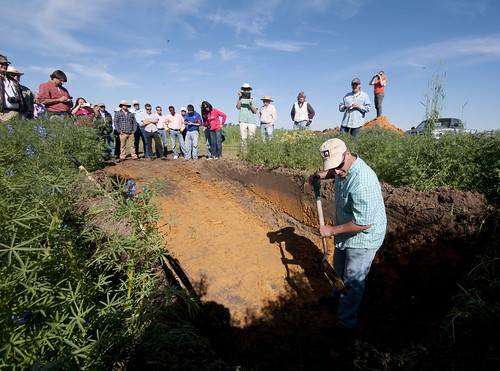
It started as an informal gathering of interested extension agents, agronomists, farmers and staff of USDA’s Natural Resources Conservation Service, who came to Gainesville, Fla. to attend an Internet-based conference sponsored as part of this year’s soil health campaign.
But much of the information was based on Midwestern experience. Everyone knows Florida is different, with sandy soils and a longer growing season.
So perhaps it wasn’t surprising when the Gainesville group suggested taking the discussions further. In a flurry of emails, the follow-up meeting evolved into a small tour of cover crop practitioner Kirk Brock’s farm, and then grew to include neighboring Fulford Farms.
A growing number of America’s farmers are using soil health management systems to improve the health and function of their soil, and these two farms served as great examples.
More than 45 folks attended the “Discover the Cover” Cover Crop and Soil Health Field Tour this spring at the two farms.
At Brock’s farm, folks were surrounded by a field of blue lupine on one side and winter rye on the other as Kirk Brock discussed his cover crop practices of the last 10 years. He explained how cover crops stopped his soil from washing into the nearby creek. His crop rotation includes corn, soybeans, peanuts, and occasionally cotton. Participants took notes, snapped photos and tweeted.

Then, at Fulford Farms, we watched Stephan Fulford drive his modified harrow, a farm implement, to roll down the cover crop. The 2,000 acre farm grows soybeans, cotton, peanuts and grain sorghum.
After working in North Carolina as an extension agent, Fulford planned on adopting no-till farming and using cover crops when he returned home in 2004. By 2006 he had converted the farm to no-till, and it worked. After significant rainfall events, Fulford said he has no erosion.
So what’s next? Everyone agreed there are so many possibilities: conducting longer-term research, connecting with growers in other Gulf States, exploring the cover crop mixes, and looking at the nitrogen cycle, topography, soil profile, plant dates and nematode suppression.
NRCS provides technical and financial assistance for farmers and ranchers interested in using conservation practices to improve soil health. To get started with NRCS, visit your local USDA Service Center or www.nrcs.usda.gov/GetStarted.

